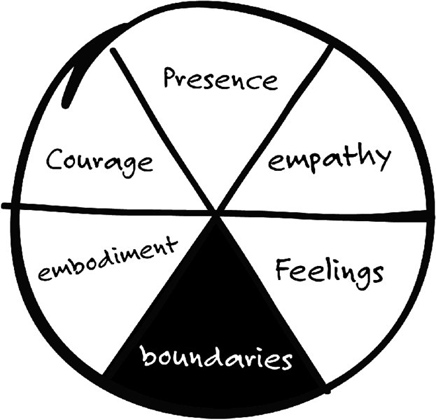Chapter 7 Boundaries and Systems

Boundaries don’t keep us apart,
they bring us together; they protect us
so we can be safe with another person,
a way of being with each other as equals
so that each stands in the light.
—Nancy Kline (1999)
In this dimension of the Self as Coach model, I’m going to artificially pull apart Boundaries and Systems so we can take a look at the nuances before we examine how these are on the same side of the coin.
The Necessity of Boundaries
What do you know about your own boundary preferences? How much physical space do you like to have around you—your personal space? How clear are you on what you say yes to and what you say no to? Is it harder to say yes or no to some people more than others? Do you make decisions by going inside and checking your own rudder or are you often influenced by what others would like?
These questions touch on the outer edges of where our individual boundaries start and stop, how crisp they are, or how much they absorb or hold at a distance the challenges and victories of others. This is where boundaries begin for us as coaches, as well. In this dimension, our ability to hold strong boundaries is intertwined with keeping our empathy balanced. If we absorb (empathy contagion) the experiences of others —taking them on, taking them home, wanting to rescue and alleviate—chances are, our boundaries are wobbly. ...
Get Self as Coach, Self as Leader now with the O’Reilly learning platform.
O’Reilly members experience books, live events, courses curated by job role, and more from O’Reilly and nearly 200 top publishers.

